5. Witchfinder General (Michael Reeves, 1968)
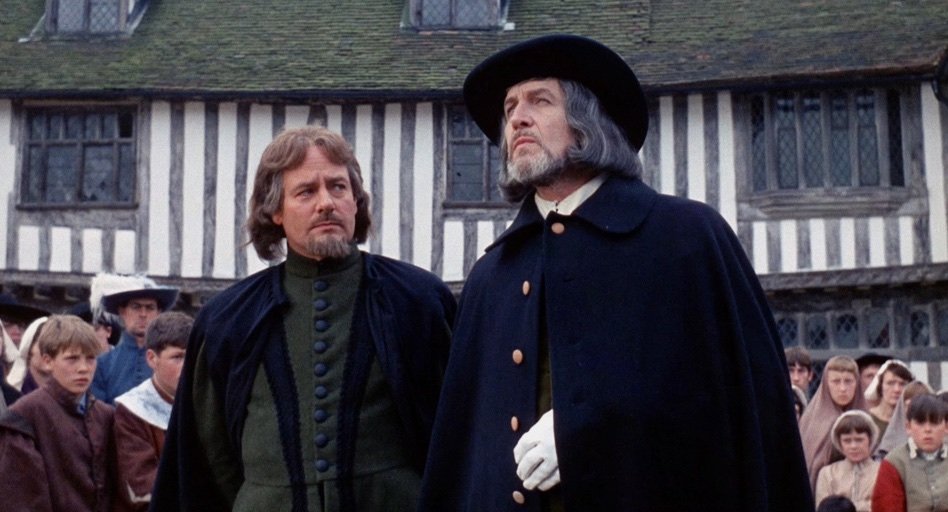
There was a time during the 1960s and 70s that horror cinema, and British horror cinema in particular, turned its gaze towards the rural landscape. Idyllic spaces and idiosyncratic villages became the backdrop for explorations into morality, superstition, and occultism. Rurality was often used as an isolating space where outsiders would be drawn inwards into its claustrophobic eccentricity. This trend perhaps began with Wolf Rilla’s Village of the Damned in 1960, though the style started to come to prominence in the early 70s with Straw Dogs (1970), which cast an American (Dustin Hoffman) as its outsider character, and The Blood on Satan’s Claw (1971), finally coming to a glorious head with one of Britain’s greatest ever horror films, The Wicker Man (1973).
It is in Witchfiner General, released in 1968 and the first film from what is called the ‘unholy trinity’, where the juxtaposition between rural beauty and extreme violence is at its most effective, though. Set in the heart of the English Civil War and at a time of nationwide witch hunts during the 17th Century, Matthew Hopkins (Vincent Price), the titular witch finder, and his assistant John Stearne (Robert Russell) reek havoc across the east of England, pillaging villages and torturing and murdering suspected witches. After raping Sara (Hilary Dwyer) and killing her uncle, her fiancé Richard Marshall (Ian Ogilvy) returns from the war and vows to kill Hopkins and Stearne.
Witchfinder General’s divided historical setting is married brilliantly with the brutal and violent actions of Hopkins and Stearne, who are both allegedly working under the command of Parliament. This is a time of social collapse, symbolised through Hopkins’ totalitarian reign of terror that is driven by a skewed moral compass. Witchfinder General is a fictionalised depiction of a darker past, the rural setting, here, being used for significant symbolism as if Britain’s immorality is about to burst at the seams.
At first extremely controversial, Witchfinder General has since garnered cult status – helped by director Reeves’ sudden death only 9 months after the film’s release. It is a historical horror film whose influence can be found stamped on contemporary films ranging from Ben Wheatley’s A Field in England (2013) to Ari Aster’s Midsommar (2019). Controversial at first but now revered for its distinctive, visual style. A must watch.
4. Fascination (Jean Rollin, 1979)
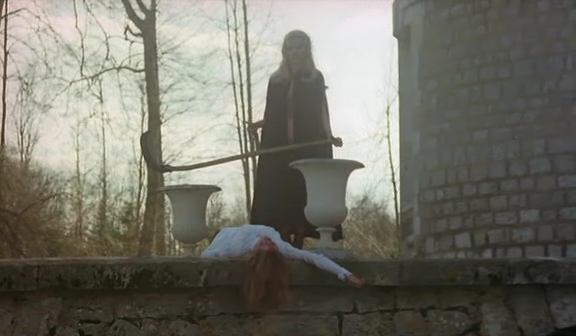
Much like Walerian Borowczyk, Jean Rollin is primarily known for his work within the fantastique genre, beginning his film career with a string of low-budget, stylised vampire films that relied heavily on a blend of horror, science fiction, and eroticism. The films that followed Rollin’s Requiem for a Vampire (1971) finally strayed from vampirism with The Iron Rose (1973), in particular, opting to choose a cemetery as the playground for a more psychologically grounded horror film as two lovers lose their minds in its maze-like design. Rollin’s The Grapes of Death (1978) is considered one of his most successful films and takes a unique approach to the zombie film not long after George A. Romero’s famous Night of the Living Dead (1968), substituting Romero’s bloodthirsty creatures with an inherent madness.
Rollin eventually returned to the vampire film with Fascination, however – his most stylish and effective film to date. Set in 1905, a thief on the run finds refuge in a remote château only to be confronted by two sinister and seductive women residing there. Innocent at first, the thief soon realises that there is something much more mysterious behind the women’s reasons for being there, ultimately putting his life in danger.
Like all of Rollin’s films, Fascination is beautifully designed that aids the bizarre and atmospheric tale. By rejecting realism, Rollin crafts a poetic narrative, told through an off-kilter camera style and jerky plot progression. The film’s style comes to a head in the infamous scene where porn-star Brigitte Lahaie’s character wields a giant scythe to go on a late-night killing spree.
A distinctive, odd, and artistic horror film that is stamped by Rollin’s distinguished flair for visual storytelling.
3. The Shout (Jerzy Skolimowski, 1978)
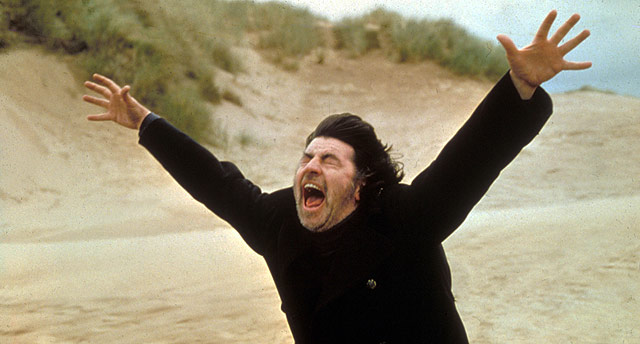
The Shout was Polish director Jerzy Skolimowski’s second feature film set in the UK, following his peculiar London-set horror film Deep End (1970). Substituting the city for the Devon coastline, however, Skolimowski’s claustrophobic rural film could be considered as yet an additional entry into British folk horror cinema, another example of mysterious characters juxtaposed against idyllic landscapes.
The Shout stars Alan Bates as a man who claims he is able to kill anyone with a single bellowed shout, a trick he learnt during a period in the Australian outback. John Hurt stars as his mellow adversary, a man talented at avant-garde music whose isolated home is invaded by Bates’ Crossley character – and whose wife, Rachel (Susannah York), is seduced too.
Skolimowski’s film seems to owe a debt to Nic Roeg’s early work; his frequent use of cross fades and disarranged editing techniques are reminiscent of Roeg’s Don’t Look Now and adds to the films disorienting effect. The actual shout scene, which is set atop a series of sand dunes along the Devon coastline, is evocative of Schlesinger’s Far from the Madding Crowd’s (1967) famous sword-wielding scene, which similarly blends an odd sexual tension with fear and utilises the expanse of the vast landscape.
The Shout is a brilliant example of editing and narrative working in tandem, culminating in a foreboding atmosphere.
2. Vampir Cuadecuc (Pere Portabella, 1970)
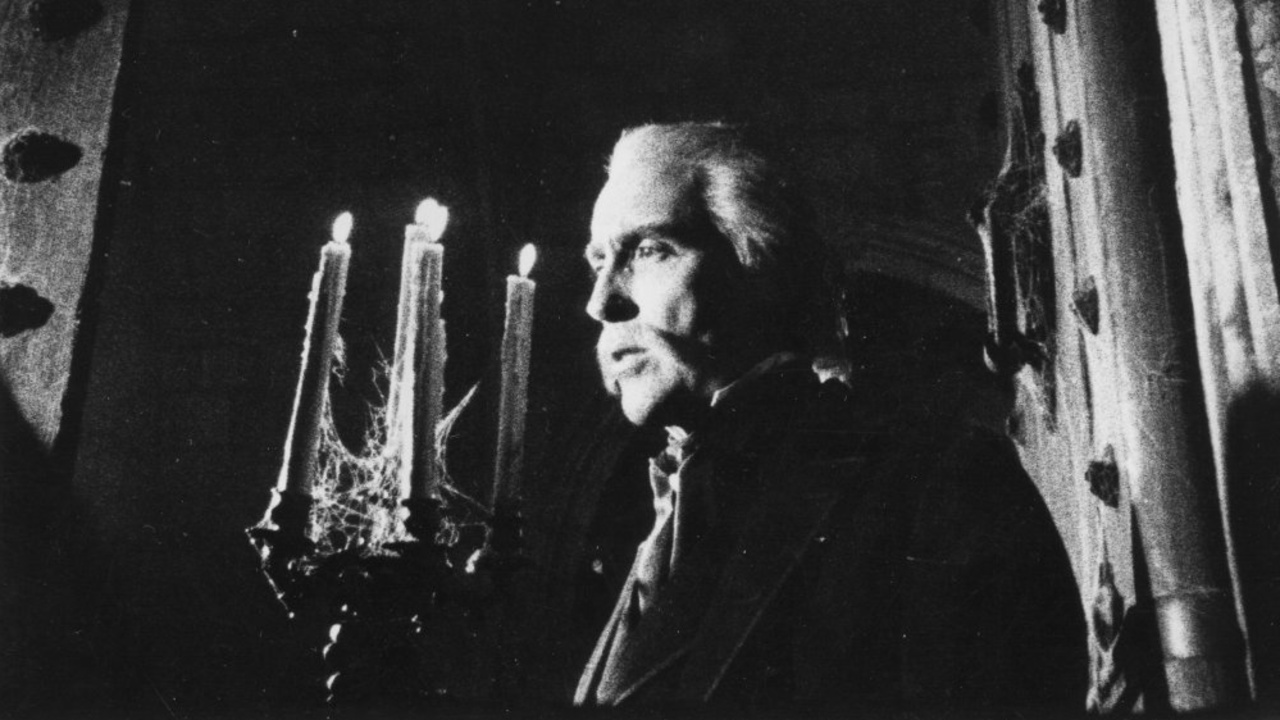
Portabella’s Vampir Cuadecuc is like nothing else. What began as a behind-the-scenes documentary project about Jesus Franco’s harrowing Count Dracula (1970) featuring Christopher Lee, becomes a re-imagining and re-textured version of the same film that lies somewhere between fiction, nonfiction, and dream.
It is filmed using a grainy black and white film stock reminiscent of Peter Tscherkassky’s experimental films that also reworked footage to create its own daring and often scary narratives. Filmed in Spain during General Franco’s dictatorship, Portabella smartly utilises the Dracula storyline as a metaphor for Franco’s rule; Dracula’s bloodthirsty and manipulative character traits become emblematic of Franco’s authoritarian and repressive regimes.
Ditching dialogue almost entirely, Vampir Cuadecuc relies on the grainy film stock and a brooding soundscape from Catalan musician, Charles Santos, that places this film into its dream-like space. By drifting in and out of behind-the-scenes and actual scene footage, the film has a delirious quality, at once acting like found footage and a beautifully constructed narrative.
The film ends as the book/story does with one of the most inventive and beautiful death scenes there is – Christopher Lee is at his best, here, whether consciously or unconsciously.
1. Mother Joan of the Angels (Jerzy Kawelerowicz, 1961)
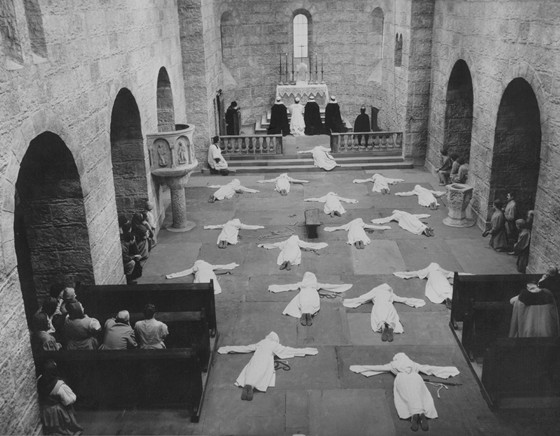
Set in the 17th Century, Father Józef Suryn (Mieczyslaw Voit) travels to a remote Polish convent in order to inspect and exorcise a small group of possessed nuns after the local priest, Father Garniec, was violently burnt at the stake. Met by Mother Joan (Lucyna Winnicka) in a bizarre and minimalist sequence that places Mother Joan’s possession centre stage, Father Suryn soon seems to fall in love with her and ultimately sacrifices himself to the Devil in order to save her soul.
Unlike Ken Russell’s The Devils (1971), which is based off of the same historical moment in Loudun, 1634, Kawelerowicz decides to place his story after Gerniac’s trial and murder. By doing so, Kawelerowicz strips the story of the eroticism seen in Russell’s version and minimalises the set design in order to highlight empty spaces, making the film more claustrophobic. The film’s story unfolds in stark chiaroscuro black and white that saps the barren landscape of any vibrancy. A film that is almost forgotten because of Russell’s masterpiece, Mother Joan of the Angels is a classic of Polish cinema not only influencing Russell’s work but also films like The Exorcist (1973), The Blood on Satan’s Claw, and The Omen (1976) – all films that would come to define a generation of horror cinema.
It is a horror film that relies on its empty, chamber-like spaces, its hymnal and jaunty score, and its monochrome photography. It substitutes the large exorcism set pieces of The Devils or Friedkin’s film in order to focus on something more psychological – the fear factor is hiding in the shadows, here, never in plain sight.
As much as The Devils is a must watch, Mother Joan of the Angels is a masterpiece in its own right, well deserving of a renewed interest (oh, and it won the Special Jury Prize at Cannes in 1961). Give it a watch.